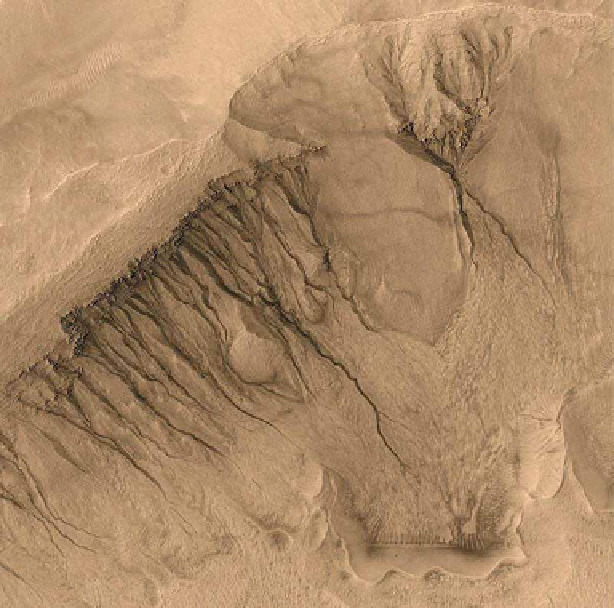Geoscience Reference
In-Depth Information
Fig. 8.11
Gullies, similar to those formed on Earth, are visible on this image from Mars
Global Surveyor
(
http://www.msss.com/mars_images/moc/news2002/gullies_streaks/
and
http://
photojournal.jpl.nasa.gov/catalog/PIA03872
- NASA/JPL-Caltech/MSSS, 2002)
Therefore, the best potential locations for discovering life on Mars may be at
subsurface environments that have not been studied yet. The extensive volcanism
in the past possibly created subsurface cracks and caves within different strata,
and liquid water could have been stored in these subterraneous places, forming
large aquifers with deposits of saline liquid water, minerals, organic molecules, and
geothermal heat - potentially providing a current habitable environment away from
the harsh surface conditions.
8.3.9
Findings by Robotic Probes
8.3.9.1
Mars 1
Mars 1 was the first spacecraft launched successfully to Mars in 1962. Some
data was collected during flyby at approximately 193,000 km, but communication

Search WWH ::

Custom Search